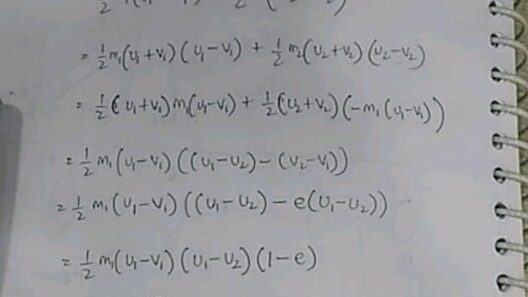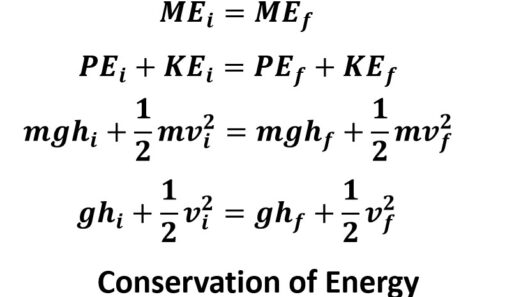The modern-day household is a labyrinth of electrical devices, all designed to simplify our lives. However, this convenience comes at a cost—namely, increased electricity consumption and higher utility bills. As homeowners seek ways to mitigate these expenses and reduce their environmental impact, the spotlight falls on effective strategies for conserving electrical energy. Fortunately, numerous actionable steps can be taken to curtail power usage without sacrificing comfort or convenience. Below are some practical tips and insights to help you navigate the realm of energy efficiency at home.
Energy-Efficient Appliances: The Cornerstone of Saving
One of the paramount concerns for homeowners revolves around the efficiency of the appliances they use. Energy-efficient appliances are specifically designed to consume less electricity while delivering optimal performance. When shopping for new devices, look for the Energy Star label, which signifies that the product meets strict energy efficiency guidelines set by the U.S. Environmental Protection Agency.
It’s essential to consider not only your major appliances, such as refrigerators and washing machines, but also smaller devices like microwaves and hairdryers. Many households overlook these smaller units, yet they can collectively contribute to significant energy drain. Upgrading to energy-efficient models can dramatically reduce your overall electricity consumption.
Smart Home Technology: Taking Control of Your Consumption
The advent of smart home technology has revolutionized how we interact with our living spaces. By installing smart thermostats and energy monitoring systems, homeowners can gain unprecedented control over energy usage. Smart thermostats allow for programmable scheduling, enabling you to adjust heating and cooling settings in accordance with your daily routine. This means less energy wasted on heating or cooling an empty house.
Moreover, energy monitors provide real-time data on electricity consumption, helping identify which devices consume the most power. Armed with this information, individuals can make informed decisions about when and how to use their electrical devices. As a result, this technology not only enhances convenience but also promotes conscientious energy usage.
Minimizing Phantom Loads: The Silent Energy Thieves
Phantom loads, also known as standby power, refer to the electricity consumed by appliances and electronics when they are turned off but still plugged in. Common culprits include chargers, televisions, and gaming consoles. Although each individual device may draw a minuscule amount of power, these figures accumulate over time, resulting in notable costs on your monthly bill.
To combat phantom loads, consider utilizing smart power strips, which cut off power to devices when they are not in use. Alternatively, you can simply unplug devices when they are not actively being utilized. By adopting this practice, you can significantly decrease unnecessary energy consumption and contribute to a more sustainable household.
Utilizing Natural Light: The Power of the Sun
Lighting makes up a substantial portion of household electricity consumption. Embracing natural light is a simple and effective strategy for reducing reliance on artificial lighting. Begin by rearranging your living space to maximize sunlight exposure during the day. Use sheer curtains to diffuse bright light while still allowing it to permeate your home. This not only creates an inviting atmosphere but also illuminates your space without consuming electricity.
Should artificial lighting be necessary, opt for LED bulbs instead of traditional incandescent options. LED lights are significantly more efficient and have a longer lifespan, translating to both lower energy costs and diminished waste over time.
Heating and Cooling Efficiency: The Importance of Insulation
Heating and cooling systems constitute one of the largest slices of the energy consumption pie in homes. An essential way to bolster efficiency is to ensure that your home is properly insulated. Gaps in insulation can result in substantial energy loss, leading to higher heating and cooling demands. Consider conducting an energy audit to pinpoint areas where insulation could be improved, such as attics, basements, and even walls.
Additionally, routine maintenance of heating and cooling systems optimizes their performance. Regularly changing air filters and scheduling professional inspections can ensure these systems operate efficiently, further conserving energy.
Engaging in Conscious Consumption: Behavioral Adjustments Matter
Ensuring a commitment to energy conservation goes beyond equipment and technology; it also hinges on conscious behaviors. Simple habit changes can yield significant savings. For example, turning off lights when leaving a room or unplugging devices that are rarely used can make a difference. Likewise, using a clothesline instead of a dryer on sunny days, or washing clothes in cold water can greatly reduce electrical consumption.
Furthermore, educating family members, particularly children, about energy conservation can instill lifelong habits that contribute to a more sustainable lifestyle. The collective impact of small adjustments can lead to substantial energy savings over time.
Conclusion: The Collective Responsibility
As the world grapples with climate change and declining natural resources, conserving electrical energy has become a shared responsibility. By adopting simple practices and making informed decisions about household appliances, a significant reduction in electricity consumption can be achieved. Moreover, the financial benefits associated with lower utility bills cannot be overstated. Through diligence and awareness, every household has the potential to contribute to a more sustainable and eco-friendly future.
Engaging in energy conservation is not just a personal endeavor; it is a collective movement toward a more sustainable planet. Take the first step today and embrace the myriad possibilities available for reducing electrical energy consumption in your home.






